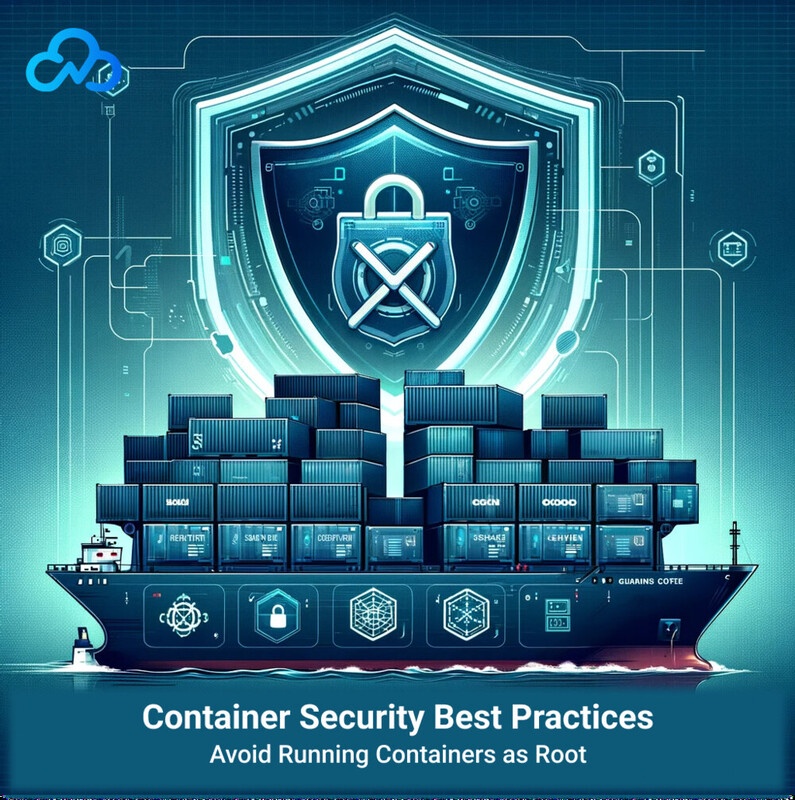Containers have become a component of software development and deployment providing benefits such, as portability, scalability and efficiency. However it is crucial to consider the default behavior of containers running with root user privileges when it comes to containers security best practices. In this article we will delve into the consequences of running containers as root. Discuss recommended practices for bolstering container security.
Containers Run as Root by Default
By default unless explicitly configured otherwise containers operate with root privileges. This implies that even if you initiate a container using a root user account the processes within the container still possess root access. This default behavior poses security risks since it effectively grants root level access, to the host machine if an attacker successfully breaches the containers boundaries.
Let’s demonstrate this behavior with a simple example using Docker:
$ whoami
vagrant
$ docker run -it alpine sh
/ $ whoami
root
In this example, we launched an Alpine container as a non-root user, but the user identity inside the container is still root. If an attacker were to escape this container, they would have full root access to the host machine.
Override the User ID
To mitigate the security risks associated with running containers as root, you can override the user ID for the container. This can be done at runtime by specifying a user ID for the container. In Docker, you can achieve this with the `–user` option:
$ docker run -it — user 5000 ubuntu bash
I have no name!@b7ca6ec82aa4:/$
In this example, we launched a container with a non-root user ID of 5000, enhancing security by reducing the potential attack surface.
Root Requirement Inside Containers
Some container images are configured to run as root by default, often due to historical reasons or compatibility with legacy software. For instance, the Nginx container image, as of the time of writing, runs its master process as root. While this makes sense in a traditional server environment, it poses security concerns in containers.
Many vendors now provide Docker images that run as unprivileged users, enhancing container security. You can also modify existing Docker images to run as non-root users by adding a `USER` command to the Dockerfile.
Avoid Runtime Package Installation
Running containers as root may sometimes be necessary for package installation during the image build process. However, allowing containers to install software packages at runtime is discouraged for several reasons:
1. Inefficiency: Installing all required software during the image build phase is more efficient and reduces resource consumption when launching containers.
2. Vulnerability Scanning: Packages installed at runtime may not undergo vulnerability scanning, increasing the security risk.
3. Identifying Vulnerabilities: Determining which containers have vulnerable packages becomes challenging when software is installed at runtime.
4. Read-Only Containers: Running containers in read-only mode makes it harder for attackers to install malicious code.
Consider using immutable containers, which further enhance security by preventing changes to the container’s filesystem after creation.
Rootless Containers
Rootless containers are an exciting development in container security. They allow non-root users to run containers securely by leveraging user namespaces. In a rootless container, a regular non-root user ID on the host is mapped to root inside the container. This means that even if an attacker escapes the container, they do not gain automatic root privileges on the host.
Rootless containers provide significant security benefits but are not without limitations. Some container images may behave differently in rootless containers due to Linux capabilities. These capabilities are isolated within user namespaces, which may affect certain container operations, such as binding to low-numbered ports.
Conclusion
Running containers as the root user is a significant security risk that should be avoided whenever possible. By following best practices such as overriding the user ID, using non-root container images, and leveraging rootless containers, you can enhance containers security best practices and minimize the attack surface. Container security is a crucial aspect of modern software development, and every effort should be made to ensure the safety of your applications and data.


No comments yet